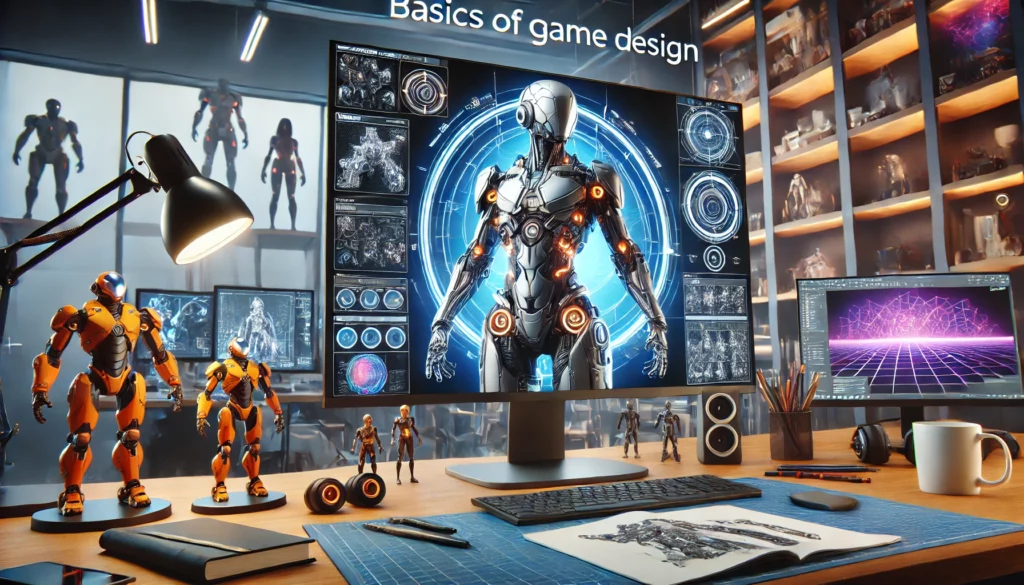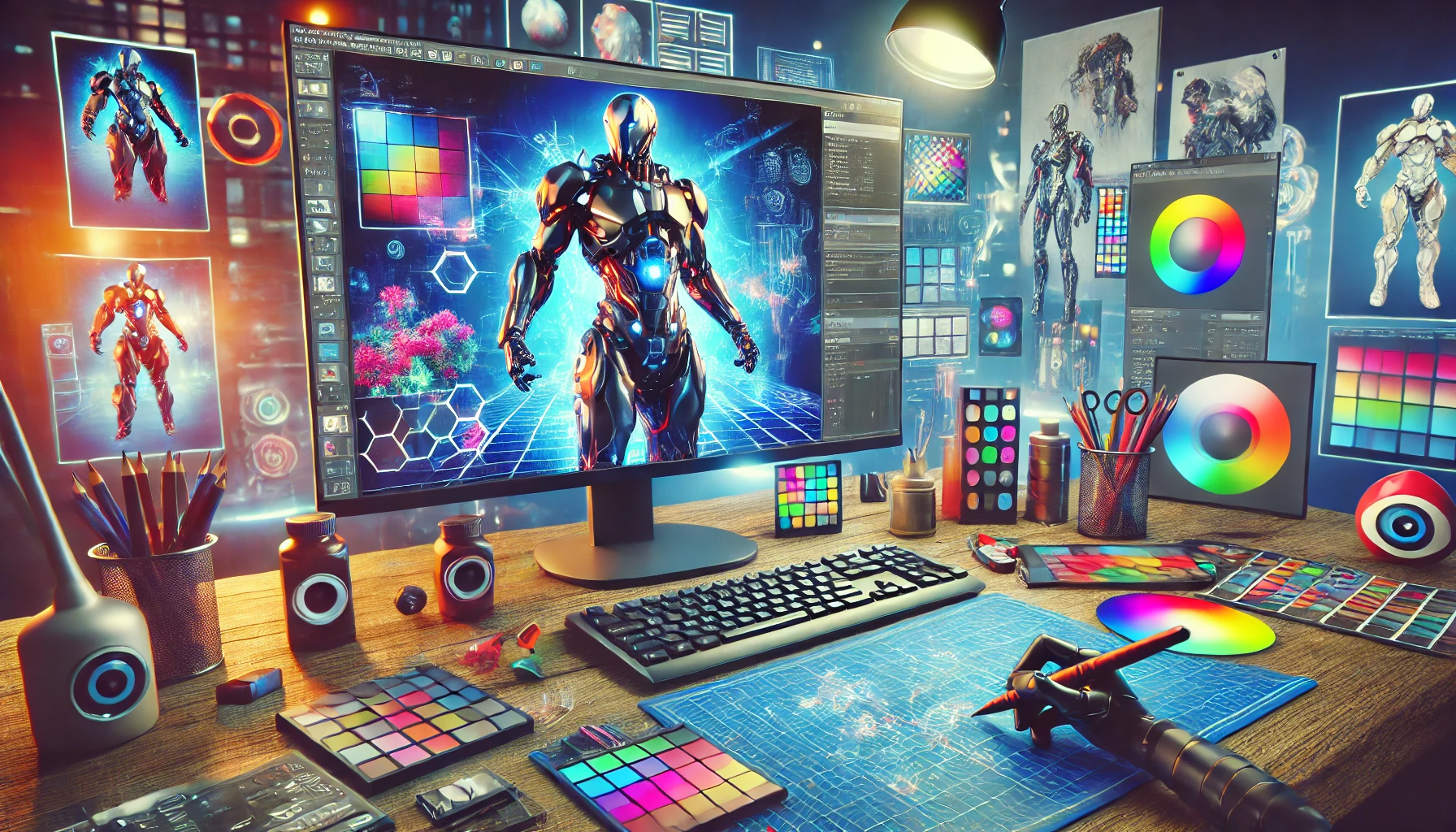In video games, characters are the heart and soul of many stories. Whether you’re playing an action-packed adventure or a heartwarming RPG, the characters bring the game to life. But how are these characters created? One of the key components in bringing these iconic figures to life is through video game engines and character models. In this blog, we will dive into the basics of game character modeling, exploring the process of creating character models and how they interact with game engines to bring your favorite characters to life.
What Are Video Game Character Models?
At its core, video game character models are 3D representations of characters you see in video games. These character models are created by artists using various tools and software, including Unreal Engine and Unity, to bring a character’s appearance and personality to life in a virtual world.
Creating a character model involves a lot more than just drawing a figure. It’s a detailed process that requires knowledge of anatomy, proportions, muscle frame, and movement ability. These aspects are essential for making a character appear realistic or stylized, depending on the style of the game.
The Basics of Game Character Modeling
Game character modeling involves several stages, from initial sketches to final animation. Let’s break down the whole creation process:
1. Concept and Sketching
Before jumping into 3D modeling, a character starts as a rough idea. The artist will usually begin with sketches that capture the character’s essence, personality, and style. These sketches act as blueprints for the 3D model and give the artist a visual guide for proportions and design.
2. Creating the Base Mesh
Once the sketches are finalized, the next step is to start creating the 3D model. This begins with building the base mesh, which in essence is a simple form of the character. The artist uses modeling software like Blender or Maya to create the mesh. At this point, the model might look rough, but it provides a starting point for the more detailed work to come.
3. Detailing the Model
After the base mesh is created, it’s time to add detail to the character. This process involves adding smaller elements like the character’s face, clothing, and accessories. Artists work on the model’s proportions, adding detail to the muscle frame, skin, and any additional features. This stage is crucial to ensuring the character looks good from all angles.
4. Texturing
Once the model has the right shape, it’s time to develop and apply textures. Texturing involves adding colors, patterns, and materials to the model to give it a realistic or stylized look. Textures make the character look more alive by providing the details needed for skin, clothes, hair, and even small surface imperfections.
5. Rigging the Character
To make the character move, rigging is the next step. This involves creating a skeleton inside the model that can be manipulated. The rig or skeleton allows animators to pose and animate the character easily. It’s essentially the bones of the character, linking the model with its movement and ability to animate properly in the game.
6. Animation
Once the model is rigged, the character is ready for animation. Animators work with the rigged model to create lifelike movements for characters such as walking, running, and jumping. This stage is essential for making the character feel like it’s truly part of the game world. The movement should be consistent with the game’s style, whether it’s realistic or more stylized.
7. Final Integration into the Game Engine
The final stage of creating a character model is integrating it into the game engine, such as software such as Unreal Engine or Unity. This is where the model is placed into the game world, ready for use in gameplay. The game engine helps bring the character to life by applying lighting, effects, and physics that will interact with the model during gameplay.
Stylized Characters vs. Realistic Characters
One important aspect of game character modeling is the choice between stylized characters and realistic ones. Stylized characters are more exaggerated and can have features that don’t necessarily follow real-world anatomy. These types of models of characters often appear in cartoonish or fantasy games.
On the other hand, realistic animated characters aim for a lifelike appearance, mimicking real-world anatomy and movements. This requires a lot of effort and attention to detail, as artists need to ensure that the character’s muscles, joints, and proportions are accurate.
The Role of Tools and Software in Character Modeling
Game character modeling is a highly technical process, requiring a range of tools and software. Some popular tools include:
- Blender: A powerful and free tool used for modeling, rigging, and animation.
- Maya: A leading software used for professional 3D modeling and animation.
- Unreal Engine: A game engine that’s used to integrate character models into games, offering powerful tools for animation and lighting.
- Unity: Another popular game engine, often used for indie games, where character models can be imported and animated for gameplay.
Each tool offers different features that help artists create high-quality character models that match the artistic vision of the game.
The Importance of Consistency and Detail
One key factor in-game character design and modeling is consistency. Whether you’re designing a stylized character or a realistic one, maintaining consistency throughout the game is crucial. The characters should match the game’s overall aesthetic and design principles. For example, the lighting in the game engine must highlight the character’s features without making them look out of place.
Detail is another important element of character design. The more detail you add, the more immersive the character becomes. Small touches like facial expressions, wrinkles in clothing, and unique accessories can make a character stand out and feel more real within the game world.

The Collaborative Effort of Game Development
Creating a character model isn’t a solo endeavor. It involves collaboration between many people, from artists and animators to game developers and programmers. Teams work together to ensure that every aspect of the character — from the sketches to the final integration — matches and works seamlessly within the game.
The final product is the result of collective effort and expertise. With the right tools, dedication, and attention to detail, a simple idea can transform an object into a fully animated, interactive character that players can enjoy in a game.
Conclusion
Understanding the process behind video game character models is an essential part of appreciating the complexity and power of game design. Whether you’re designing stylized characters or aiming for a more realistic approach, mastering the basics of game character modeling can lead to the creation of truly memorable game characters. Ready to bring your character designs to life with expert-level precision and speed? 3DAiLY offers the perfect platform to streamline your character creation process. With AI-powered tools and access to a global network of skilled artists, you can create AAA-quality assets 30x faster and at a fraction of the cost. Start today and elevate your game development with seamless, high-quality character modeling!



